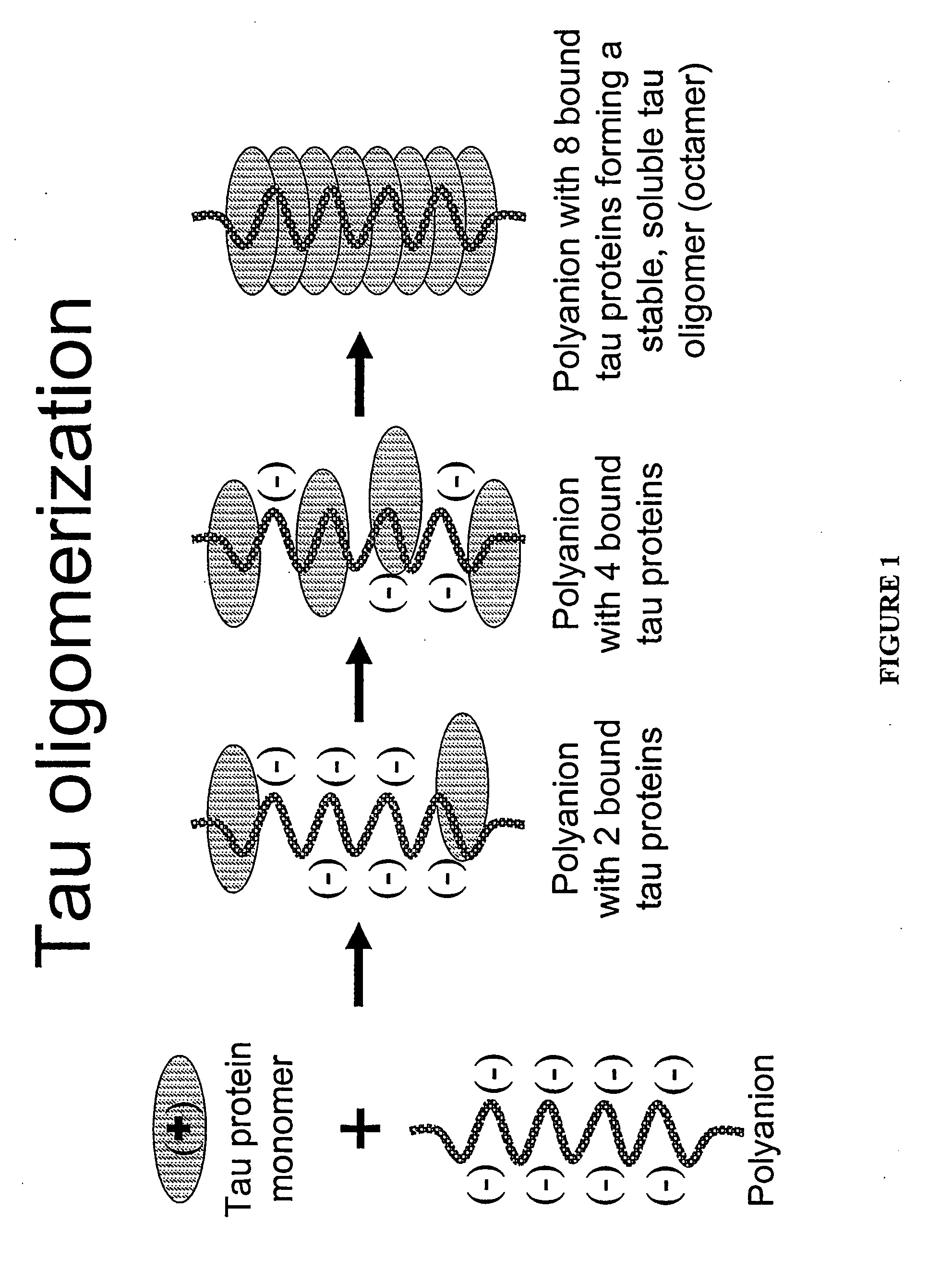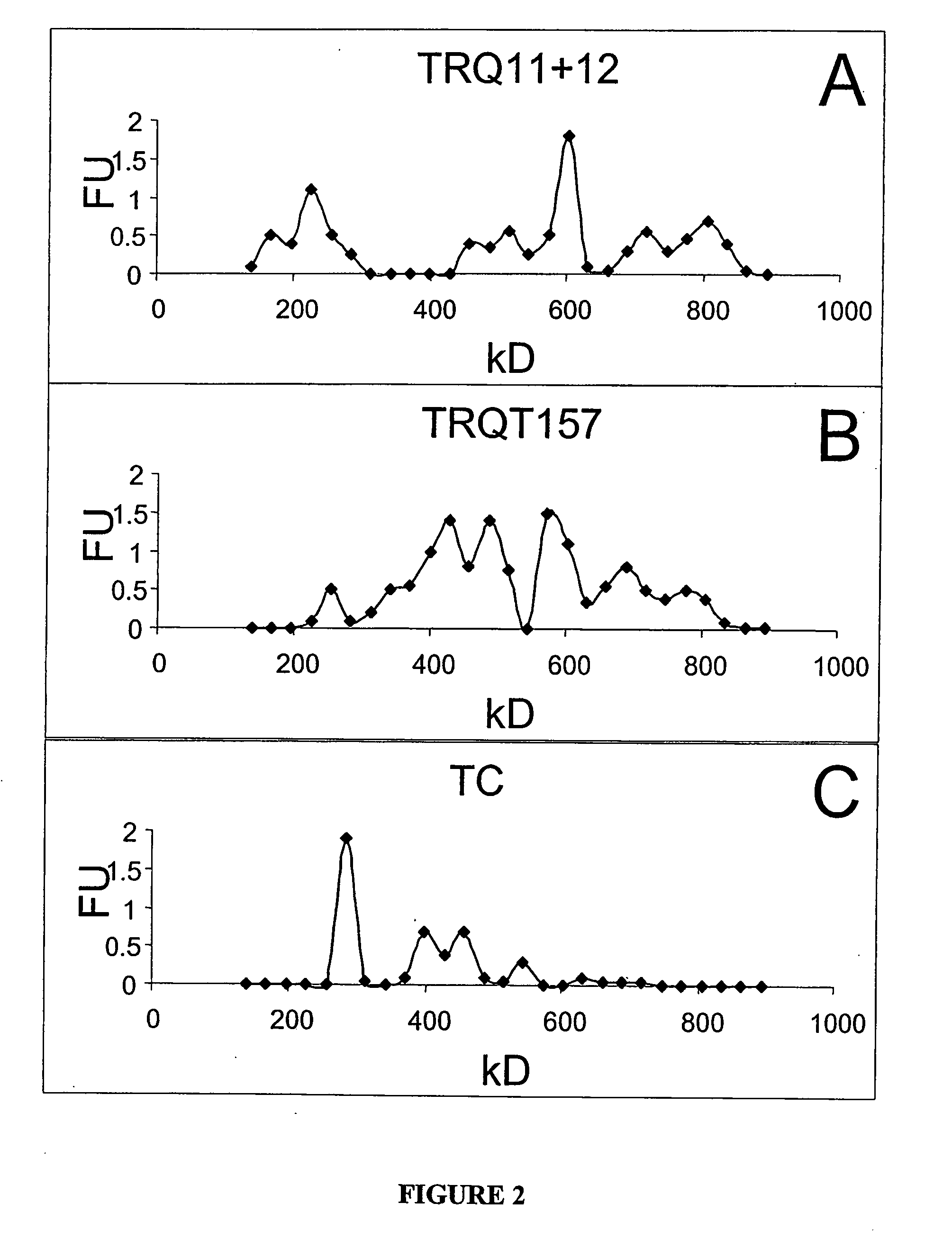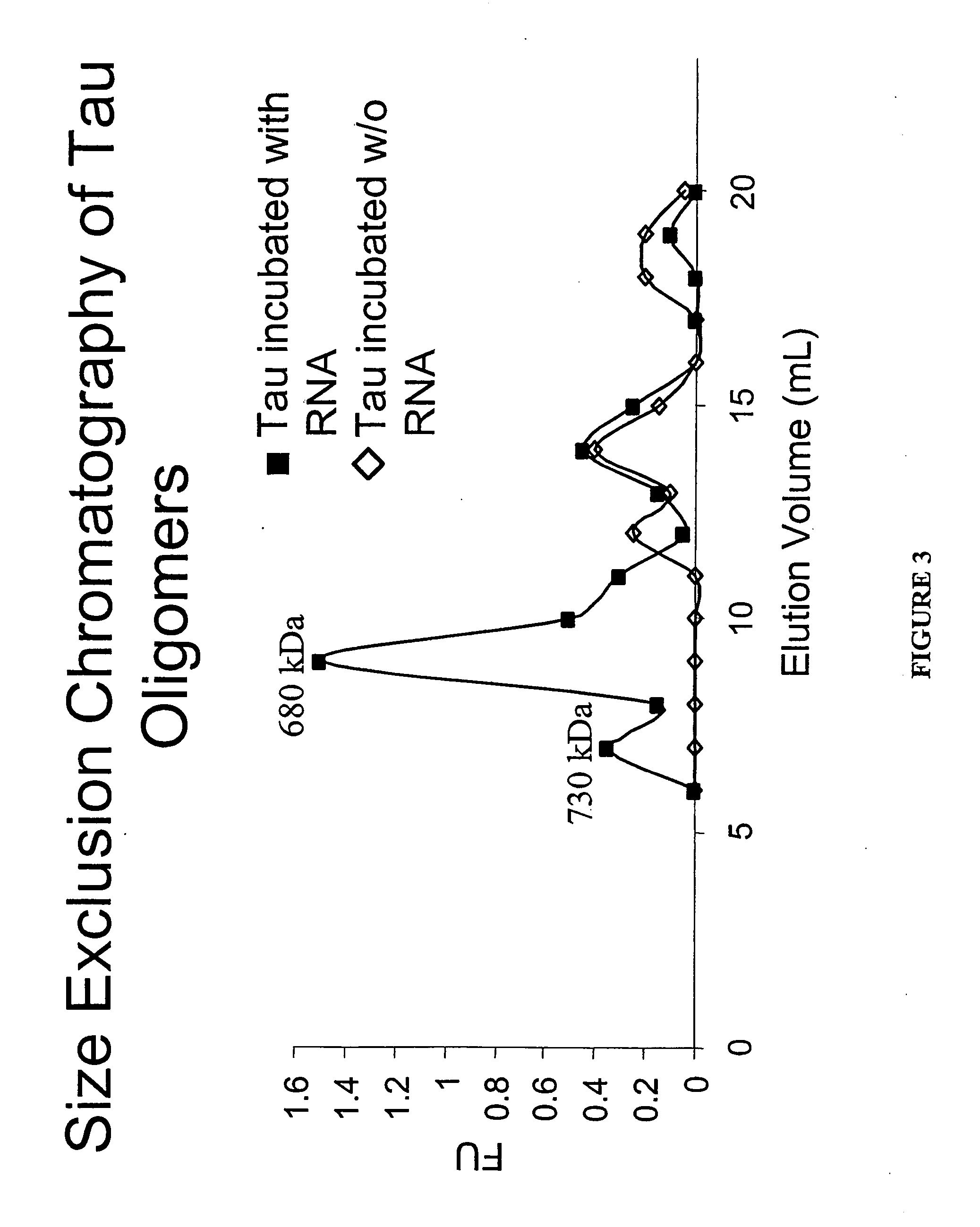Oligomerization of amyloid proteins
- Summary
- Abstract
- Description
- Claims
- Application Information
AI Technical Summary
Benefits of technology
Problems solved by technology
Method used
Image
Examples
example 1
Formation of a Soluble Tau Oligomer with RNA
[0062] RNA polyanion was used to facilitate oligomer formation of tau protein in vitro using the following, preferred, conditions: 20 pmoles of tau412 was reacted with 4 pmoles of a 197 base RNA, i.e., RQ11+12, in 50 mM Tris-HCl buffer at pH of 7.4 and incubated for 1 hour at 37° C. For oligomer formation, the ratio of tau:RQ11+12 RNA was found to be optimal at a ratio of 5:1 (FIG. 8). The 5:1 ratio was optimal for the RNA RQT157 as well (FIG. 15). Multiple types of RNAs including unstructured polyA (˜700 bases) and highly structured RNAs, tRNA (˜100 bp), RQ11+12 (197 bases), RQT157 (157 bases) and MNV (87 bases) all facilitated tau oligomer formation using the 5:1 tau:RNA ratio (FIG. 12); demonstrating the general nature of RNA facilitation of tau oligomer formation. Note, however, that the RNA polyanion BS1577—a significantly smaller polyanion—did not facilitate oligomer formation at this ratio; demonstrating that size, charge distribu...
example 2
Size Exclusion Chromatography to Estimate Oligomer Size
[0064] Purification of soluble tau oligomers was performed using size exclusion chromatography on Sephacryl S-300 and detection of tau oligomers was achieved using a modified ELISA (described below). Tau412 protein (42.9 kDa) incubated with RQ11+12 RNA (65 kDa) gave a predominant peak at 680 kDa (FIG. 3) based on elution profile of molecular weight standards thyroglobulin 669 kDa, ferritin 440 kDa, catalase 232 kDa, and aldolase 158 kDa indicating that the predominant oligomer species formed was composed of approximately 15 tau monomers assuming that the oligomer structure did not cause the complex to migrate at an aberrant size within the column. Tau protein has a native unstructured conformation giving it a larger radius than a typical globular protein of the same molecular weight. Thus, this technique is not ideal for sizing tau and its oligomers, but may still be used to separate monomeric tau and different size oligomers....
example 3
Immunological Analysis of Oligomer Formation
[0065] Formation of tau oligomers was analyzed using two different ELISA methods to provide verified data. The “modified” ELISA uses the same monoclonal antibody for capture and detection. Insoluble aggregates are removed in the ELISA procedure during washing steps. Only soluble aggregates of tau, not monomers, are detected with this ELISA because the detection and reporter antibody recognizes an epitope which is present only once within tau. At least one more tau molecule must be present in the complex for detection with the same antibody (method illustrated in FIG. 7). The modified ELISA used is similar to the modified ELISA previously used for identification of Aβ oligomers (Sian et al., Biochem. J. 349(Pt 1):299-308 2000)) and PrP oligomers (Vasan et al., Neurochem Res 31(5):629-37(2006)). This assay used antibody MN1000, recognizing tau epitope amino acids 159-163, for capture and biotinylated MN1000 as reporter. This assay was used...
PUM
| Property | Measurement | Unit |
|---|---|---|
| Temperature | aaaaa | aaaaa |
| Mass | aaaaa | aaaaa |
| Mass | aaaaa | aaaaa |
Abstract
Description
Claims
Application Information
 Login to View More
Login to View More - R&D
- Intellectual Property
- Life Sciences
- Materials
- Tech Scout
- Unparalleled Data Quality
- Higher Quality Content
- 60% Fewer Hallucinations
Browse by: Latest US Patents, China's latest patents, Technical Efficacy Thesaurus, Application Domain, Technology Topic, Popular Technical Reports.
© 2025 PatSnap. All rights reserved.Legal|Privacy policy|Modern Slavery Act Transparency Statement|Sitemap|About US| Contact US: help@patsnap.com



